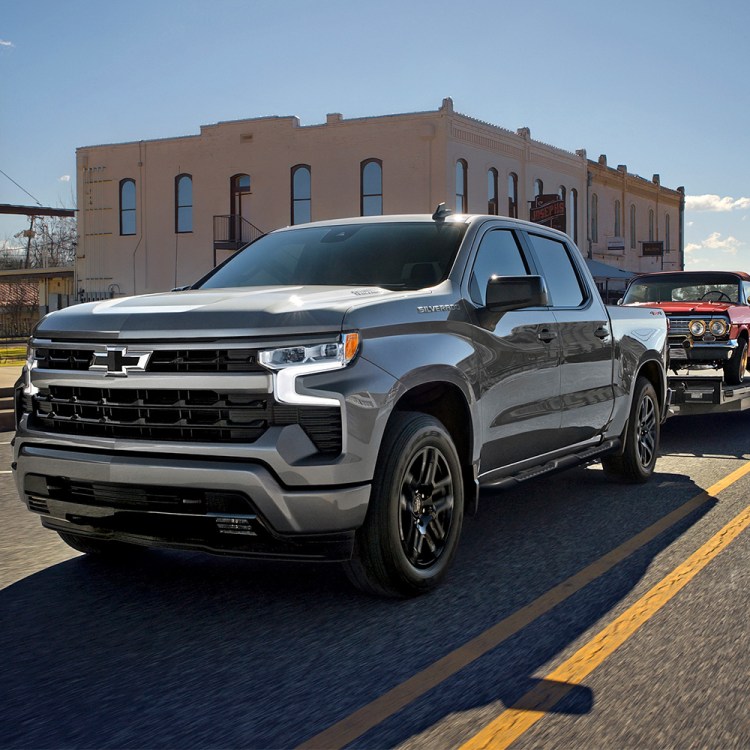Tesla is in trouble. Sales are falling precipitously across the board in Europe, despite overall growth in electric vehicles; longtime American strongholds like California are turning against the brand as CEO Elon Musk remains toxic to a sizable percentage of potential customers; meanwhile, other automakers are constantly improving their EV offerings. Put it all together and Tesla faces a world of financial hurt.
The cracks appearing in Tesla’s outlook are shining a light on opportunities now open to its rivals — in particular those that are able to attack its incredibly popular entry-level models, the Model 3 sedan and the Model Y SUV.
With their combination of strong performance, extended-range capability and relatively affordable pricing, both the Model 3 and Model Y have until recently been the default choice among the EV-curious and longtime plug-friendly drivers alike. Although Hyundai and Kia have also offered similarly priced electrified choices, there’s been enough disparity in terms of premium appeal, equipment and distance traveled per charge to keep those vehicles from feeling like direct Tesla competitors.
Enter the Volvo EX30, a vehicle that was announced two years ago as the first cost-conscious EV offering from the Swedish brand, bearing an initial price tag of around $35,000. The launch was unfortunately something of a fumble, with Volvo delaying the EX30’s official North American debut until 2025 so it could shift production to Belgium and avoid tariffs aimed at Chinese vehicles. The additional production costs associated with this strategy then forced the company to delay its plans of introducing the cut-rate single-motor option in the United States, relying first on the more expensive, but also more gifted twin-motor, all-wheel drive model.
Even with a price increase, the Volvo EX30 arrives as an intriguing foil for both the Model 3 and the Model Y. With its crossover-like stance, the hatchback fools the eye into assigning it either car or SUV status, while its $46,000 MSRP undercuts comparably equipped Teslas (outside of the $7,500 tax credits that both cars qualify for when leased). Yes, it’s a somewhat smaller vehicle both inside and out, and it can’t match Tesla’s long-legged range, but for those seeking an entry-level EV with upscale pretensions, the EX30 appears to punch above its weight class.
On paper, the comparisons are compelling. Unfortunately in the real world, it feels as though Volvo should have delayed the EX30’s arrival just a little bit longer in the hopes of coding out the ghosts in the digital machine that haunted my experience with the vehicle.

Good Size, Great Power
I’ll first focus on what Volvo’s latest EV does well. The twin-motor version of the EX30 is rated at 428 horsepower and 400 lb-ft of torque, figures that are more than enough to manage its 4,000 or so pounds of curb weight. Match those figures with all-wheel drive and a short wheelbase, and you have a recipe for a vehicle that under some circumstances feels just as lively to drive as mightier but heavier sports-oriented electrics.
On snow-covered gravel roads, selecting the Performance setting for the all-wheel drive and backing off the traction control as much as possible allowed for a small amount of drift and a decent quotient of fun. In dryer conditions, acceleration for the EX30 was impressive and well controlled (Volvo claims 3.4 seconds to 60 mph, which is wild for a sub-$50,000 vehicle). It’s refreshing to pilot something with modest dimensions (both by the tape and the scale) that makes the most of its available power, and it’s clear that the EX30 is a cut above more affordable fare like the Hyundai Kona Electric.
That being said, I also experienced some weird behavior from the all-wheel drive system when using it on a more day-to-day basis. There appeared to be some lag at slow speeds between the rear wheels spinning and the front wheels pitching in, which occasionally had the tail end slide while pulling out of an icy parking spot. This was matched with a steering wheel that occasionally refused to turn until the vehicle was in motion — a real hassle when trying to make adjustments before pulling out of a parallel parking spot.
Then there was the traction control’s overzealous application in slippery conditions. A sudden bout of warm weather combined with rain transformed my driveway into a kettle of wet slush, which thoroughly flummoxed the EX30. The car slowed to a crawl upon entering the drive, to the point where I lost almost all my momentum and thought I’d end up stuck. In these situations, a small amount of slip is required to maintain forward motion, but the Volvo was unwilling to play ball.
Other than the recalcitrance of its all-wheel drive, the EX30’s mechanicals impressed. I could even forgive its (expected) 30% range loss due to the extremely cold conditions I drove it in, as I saw roughly 186 miles on a fully charged, 64-kWh battery rather than the advertised 253 miles (at temperatures dipping to 24 degrees). While the range was acceptable, the lack of a manual preconditioning feature for the battery meant I was stuck at a 50-kW charging rate when plugged in at a public station unless I was able to program it into the navigation system well in advance. If you’re charging on the fly, be prepared for winter temps to keep you below its 153-kW maximum charging speed.

A Software Nightmare
Despite my respect for its mechanical package (and its overall handsome styling), there’s unfortunately no way I can recommend the Volvo EX30 to prospective EV buyers for one main reason: The software that serves as the primary interface between the driver and the vehicle was buggier than any other production vehicle in recent memory, rendering it an exercise in frustration every time I got behind the wheel.
Like Tesla, the Volvo’s spartan cabin relies on a center-mounted touchscreen to provide any and all information related to driving, infotainment and communications. There’s no gauge cluster, and no hard buttons to be found outside of a smattering of steering wheel controls and an unusual roof-mounted button that turns on the front and rear defrost systems simultaneously.
I’m not a fan of this kind of arrangement to begin with — it’s distracting to divert my attention from the road ahead to verify something as simple as the speed I’m traveling, or to dig through menus to find the appropriate climate control. I felt particularly vulnerable when trying to turn on the rear fog light in the middle of a blizzard, a situation where I needed all of my resources focused on the task of driving rather than repeatedly scrolling on-screen menus in search of the appropriate icon.
We Interviewed 6 New EV Buyers. One Year Later, Do They Regret It?
From a chiropractor in Colorado to a retiree in Minnesota, here’s how their opinions changed after a full year of electric drivingAn even bigger issue? Much of the time, the EX30’s software simply didn’t work. Some of the problems were just puzzling, such as the car turning its Bluetooth service on and off, over and over again in a loop, while I watched the toggle flip on the screen. This made it impossible to link my phone for long stretches of my time with the car, and it was an issue that Volvo’s own support team was unable to find a solution for even after sending them a video of the problem.
Then there was the “Rear Radar Sensor Blocked” warning that occupied 40% of the infotainment screen, hiding the entire navigation map and refusing to disappear, no matter how many times I tapped it in frustration (it also covered most infotainment menus). This happened twice in the space of an hour’s highway drive, and rendered most of the screen useless for about half of my journey.
Other problems were more alarming. The EX30 seemed unable to remember many of the vehicle or communications settings I chose, no matter how many times I saved them. These ranged from the car asking me to upload all of my contacts to Google every time I turned it on (offering me the chance to disable this setting, which it reset with each ignition cycle), to all of the safety systems wiping my selections clean with every journey. The car refused to recall whether I wanted lane-keeping assistance on or off, whether the driver-attention monitor should be active, or really any other safety system tweak.
I’ve never before experienced that in a modern vehicle, and again, it was a problem Volvo could not help me with when asked. I tried multiple reset procedures (through the infotainment system, and then also a hardware-based reset), to no avail.

Not Ready for Prime Time
The EX30’s Android Automotive operating system, which has been problematic in nearly every vehicle where I’ve encountered it (although never to this level), is clearly not ready for prime time. I’m far from the only journalist, or even owner, who’s complained about numerous problems with the system, and it remains the automaker’s biggest bugaboo.
There were a couple of other aspects of the EX30 owner experience that suggested Volvo, despite the delays, had rushed this car to market. Even with the cabin heater set five degrees higher than I would normally have selected, the car was incapable of keeping winter’s chill at bay.
Then there was the keyless entry system, which consisted of a fob with no buttons that relied entirely on an approach unlock/walk-away lock system to allow access to the automobile. Given how buggy the EX30 was, I never trusted it, which meant I almost always walked backwards from the car until the lights flashed and the mirrors folded to make sure it was secure. This is a hassle — just give us buttons, please. Even more annoying is the passenger side of the car doesn’t have sensors to detect the fob, which means you have to walk all the way around to the left side if you just want to grab something out of the back seat. Again, buttons easily solve this problem.
The Volvo EX30 had a real chance to bring something new to the affordable upscale EV space. The bones are there for a great electric car, especially if you don’t need the rear leg room found in the Tesla Model 3, and don’t mind a minimalist interior. The price is also right for making a real run at a competitor whose products increasingly come across as damaged goods to a large slice of electric car shoppers.
The EX30 ended up being a good vehicle completely hamstrung by its execution, which is hopefully something Volvo can solve with an all-night coding session and a few over-the-air updates. Until that happens, it doesn’t have what it takes to be a Tesla alternative.
This article appeared in an InsideHook newsletter. Sign up for free to get more on travel, wellness, style, drinking, and culture.























